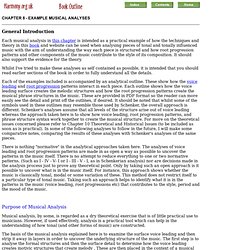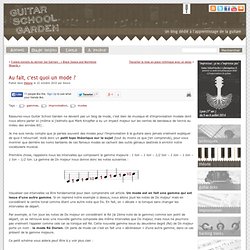

Interactive Circle of Fifths. Basic Musicianship Home Page. Music Theory: Chords at Learn Music Free. Chords are stacks of notes that sound together at the same time.

At the base of all Chords is the Triad (three note chord). Triads are made up of the root, third and fifth tones as derived from the scale in use at the time. Even when we have a Chord with lots of extensions (notes added to the triad), we find there is always a triad at its base that is either Major, Minor or Diminished. You will work with Chords throughout your musical career, so a thorough knowledge of Chords is vital.
On this page, we are simply looking at Chords in their basic root position form. I Major Chords: Starting from the basic Triad, we can add extensions to the Chord. I Major Chords (Altered): A Chord can be altered by lowering or raising the 5th of the Chord (5th scale degree up from the root) by one Half Step, a Flat 5 (b5) or a Sharp 5 (#5 or +5). I Minor Chords: These Minor Chords function as the Tonic (Key Center) when in a Minor Key, same as the I Major Chords (above) when in a Major Key. Interval Recognition via Pop Songs - Google Docs. Songs for interval recognition. Tabs that show the theory behind songs - TheoryTab.
AutoChords: Chord Progression Generator. Music Analysis Introduction. General Introduction Each musical analysis in this chapter is intended as a practical example of how the techniques and theory in this book and website can be used when analysing pieces of tonal and tonally influenced music with the aim of understanding the way each piece is structured and how root progression patterns and other components of the music contribute to the style of its composition.

It should also support the evidence for the theory. Whilst I've tried to make these analyses as self contained as possible, it is intended that you should read earlier sections of the book in order to fully understand all the details. Each of the examples included is accompanied by an analytical outline. These show how the voice leading and root progression patterns interact in each piece. There is nothing "normative" in the analytical approaches taken here. Purpose of Musical Analysis Why do this? Understanding the structure of music from different periods is an important skill for composers. Music.pdf. CHORD Building.pdf. Au fait, c’est quoi un mode ? Rassurez-vous Guitar School Garden ne devient pas un blog de mode, c’est bien de musique et d’improvisation modale dont nous allons parler ici (même si j’admets que Mark Knopfler a eu un impact majeur sur les ventes de bandeaux de tennis au milieu des années 80) .

Je me suis rendu compte que je parlais souvent des modes pour l’improvisation à la guitare sans jamais vraiment expliquer de quoi il retournait. Voilà donc un petit topo théorique sur le sujet (tout du moins ce que j’en comprends), pour vous montrer que derrière les noms barbares de ces fameux modes se cachent des outils géniaux destinés à enrichir notre vocabulaire musical. Première chose, rappelons nous les intervalles qui composent la gamme majeure : 1 ton – 1 ton – 1/2 ton – 1 ton – 1 ton – 1 ton – 1/2 ton. La gamme de Do majeur nous donne donc les notes suivantes : Visualiser ces intervalles va être fondamental pour bien comprendre cet article. Ce petit schéma vous aidera peut être à y voir plus clair :
La tonalité. Notre musique occidentale est une musique tonale.

Cela veut dire qu'elle se base sur la présence d'une tonique, une "note-base" qui est plus importante que les autres, puisqu'elle définie la "tonalité" d'un extrait musical. Cette page contient les parties suivantes. Le système tonal majeur – mineur À partir de la renaissance (XVIème siècle), la musique s'est orientée vers le système tonal majeur-mineur. Pour dire les choses simplement, on peut dire qu'un morceau de musique est soit majeur soit mineur. Extrait d'un morceau majeur. Extrait d'un morceau mineur. Ce système tonal est la base de notre musique actuelle, et les morceaux pop/rock qui fusent sur les ondes radios n'utilisent presque que ça.
Je dis cela comme ça parce que les oreilles s'habituent à la hauteur des notes et aux harmonies. La tonalité Dans notre système tonal, une tonalité est soit majeure, soit mineure. Il n'y a aucun lien entre bémol/dièse et majeur/mineur. Musictheory.net - Exercises. Music Theory Primer: Overview of all keys, key signatures, scales and triads. The table below summarises the basic ideas of music theory that relate to keys, key signatures, scales and triads.

The key signature, major triad, minor triad and degrees of the scale are listed for all of the common major keys. Just find the key that you want to look up in the left hand column, then read across to find the triads, key signature etc. Note that some degrees of the scale (e.g 2nd & 9th) correspond to the same note.
The difference is that one (in this case, the 2nd) will be a note within the first octave of the scale, and the other (the 9th) will be in the second octave of the scale. Thanks to Laramie Sasseville for getting me started with this reference table. Music Theory Online: Guides, Lessons & Exercises.